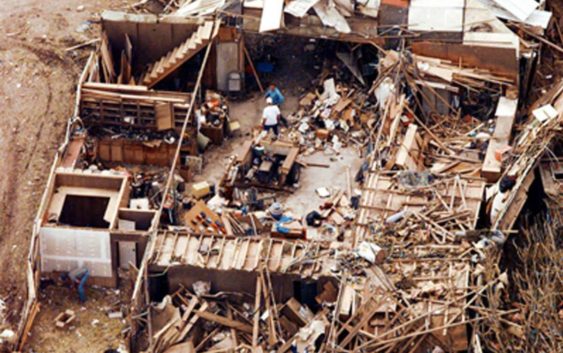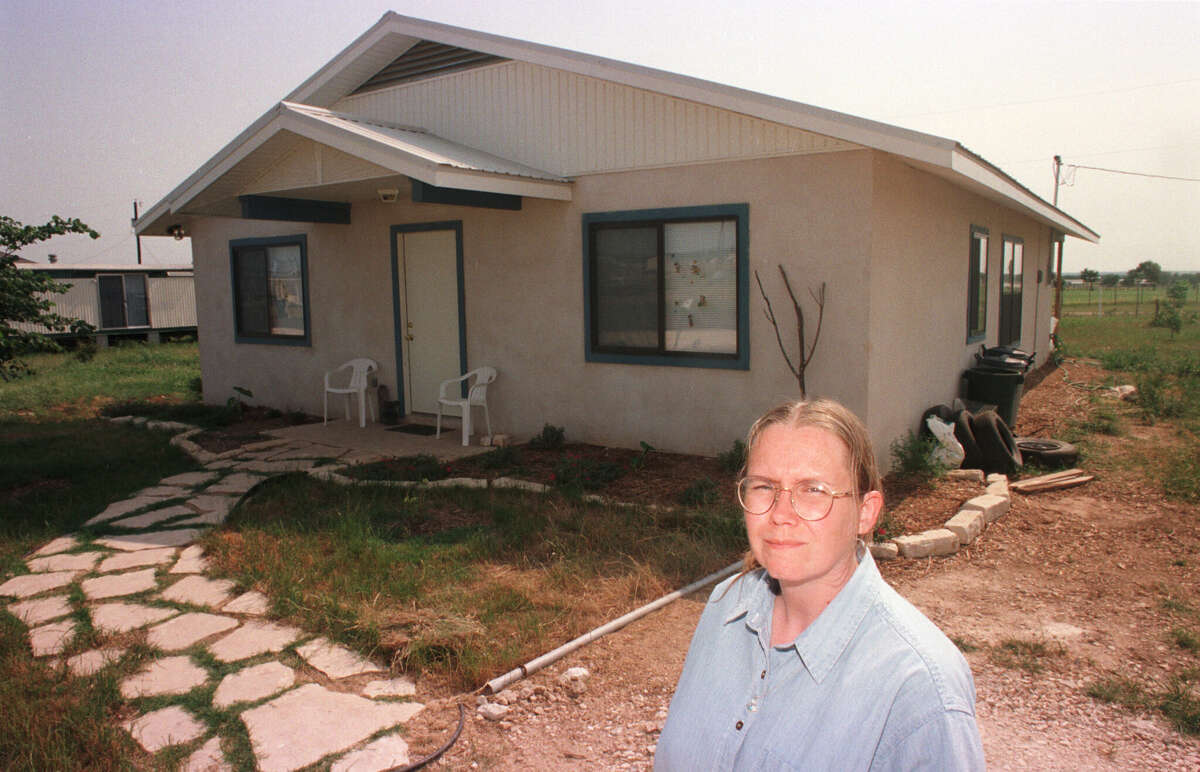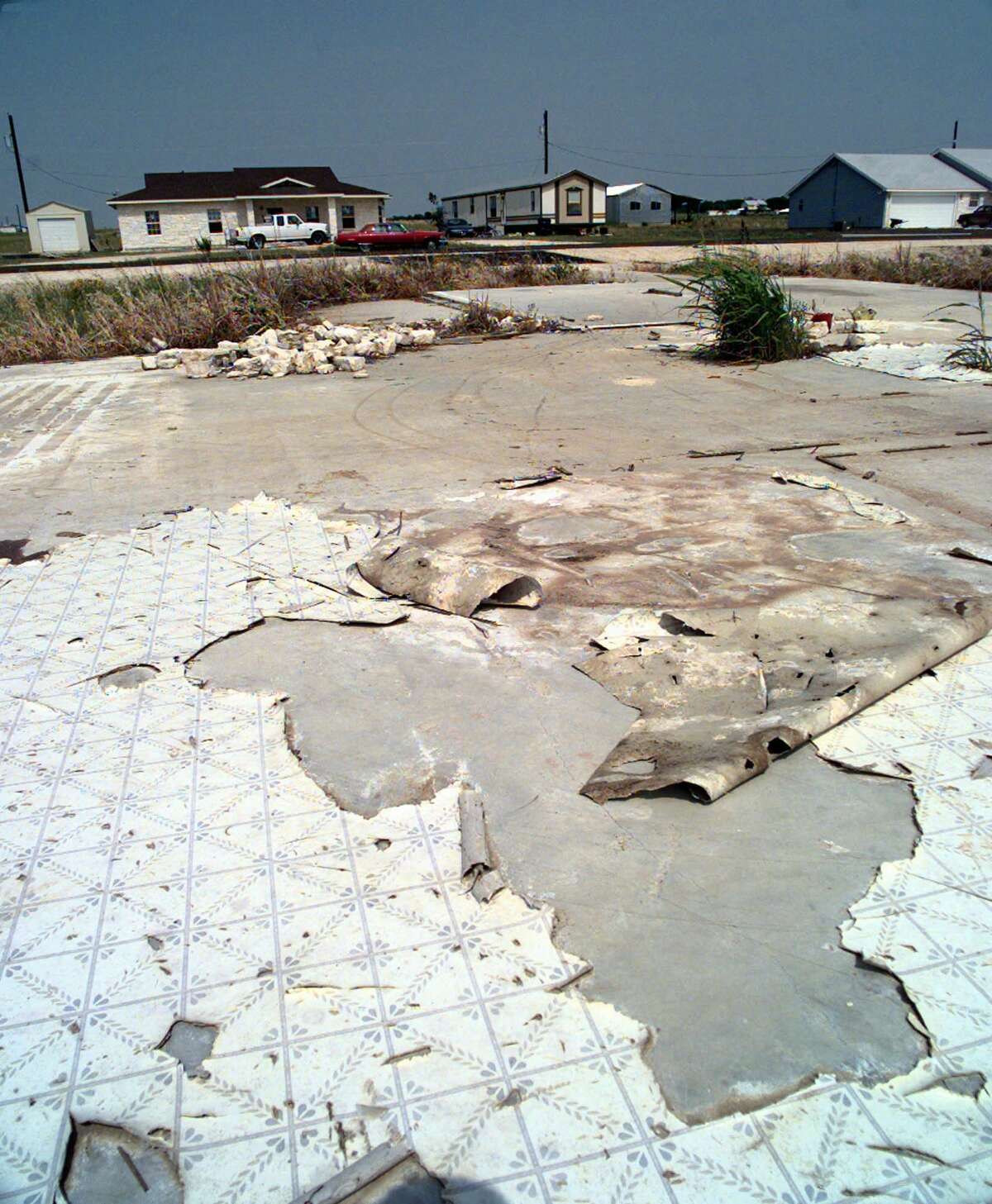- NC Gov. Stein pledges continued Hurricane Helene recovery support in 100-day address
- Austin adopts new map that greatly expands area at risk of wildfire
- CenterPoint Energy accelerates infrastructure improvements ahead of hurricane season
- Carolina Hurricanes playoff tickets go on sale Thursday
- Ask the Meteorologist: Why do tornadoes target Tornado Alley, Dixie Alley?
Revisiting the 1997 Jarrell tornado, one of the deadliest in Texas history

San Antonio and the rest of Central Texas is a stretch of land mostly situated south of Tornado Alley, the region stretching from Waco to Dallas and northward to Oklahoma and Kansas. However, on the night of Monday, March 21, thunder shook window panes and reported tornadoes tore through the area as a result of a perfect storm weather event.
While San Antonio was one of the city’s advised to be under a tornado watch, none landed within city limits. The events that took place just north of the city are considered a 1 in 15 or 20-year severe event for the Central Texas area, according to the National Weather Service. Damages from storms have been reported in Round Rock, Elgin, Jarrell, and Seguin. At this time, one casualty has been reported.
It’s eerie timing as almost 25 years ago, a similar event blew through Central Texas. That storm produced a one of the deadliest tornadoes in Texas history since 1900. The storm devastated the town of Jarrell, north of Austin.
It was an unusual and deadly day. On May 27, 1997, residents of the town in northern Williamson County braced for projected gusts of wind up to 80 mph, lightning storms, and large hail.
During the late afternoon, a 3/4 mile-wide F5 tornado, one of the most powerful on record, ripped apart the Double Creek Estates subdivision, according to the National Weather Service. In this forecast area, two F3 tornadoes also touched down, one in Bell County and one in McLennan County, as well as seven smaller twisters across the region spanning Uvalde to Georgetown.
Gerald Gower, a Jarrell local, was interviewed by the Washington Post in the aftermath. He was in the midst of searching for his missing 11-year old son.
Jarrell, Texas, residents continue search and cleanup efforts in their tornado-ravaged neighborhood, on May 30, 1997. The tornado claimed at least 27 lives, and the damage estimated at $20 million. (AP Photo/Eric Gay, File)
ERIC GAY/AP“I’ve got some hope, but the way it looks . . .” said Gower, a 47-year-old security guard, “Twisters just do crazy things to people.”
Jarrell, located about 100 miles south of Tornado Alley was a town of about 800 people at the time according to Express-News archives. The Jarrell tornado was reported to command wind speeds over 300 mph. It destroyed 40 homes, killed 27 people, including 12 children, then went on to take out 300 head of cattle and rip apart two 500-foot-wide sections of pavement on nearby county roads. Born out of an unprecedented 1997 tornado outbreak, the Jarrell tornado is the last confirmed F5 twister to have torn through Texas.
“The earth was scoured bare, pavement was ripped from roadways, [and] homes and other buildings were completely pulverized,” one initial ground report by Lon Curtis for the Weather Bulletin reads.
Homes were eventually rebuilt, but lasting havoc was wreaked onto the small community. According to Express-News archives, in May of 1998, a granite monument was dedicated in the memory of those who died in the center of town.
The National Weather Service explains that this day as particularly unusual and unexpected because it was “distinctly lacking two of the four crucial ingredients we typically look for on big severe weather events.” It also followed a strange path, moving south to the southwest.

Debby La France in front of her new home rebuilt by volunteers in 1998 after it was destroyed by the Jarrell tornado in 1997.
Steve Campbell/Houston ChronicleDespite the peculiar nature of the weather system, over the course of six hours on that day in 1997, 20 documented tornadoes touched down between the Dallas/Fort Worth and Austin/San Antonio forecast “areas of responsibility.”
Ten years following the Jarrell tornado, the Express-News checked in with residents of the town as they reflected on the events that changed the community forever.

The vinyl floor curls on a slab where a house once stood in Jarrell, Texas, as new houses are constructed in the background, on Tuesday, May 12, 1998.
RON HEFLIN/APDavid Harp was Principal at Jarrell Elementary School during the infamous storm and ten years following.
“I’m sure we’ll all spend a few moments thinking about it. Everyone will stop to remember those folks, because about half of them were children we were all familiar with,” said Harp in 2007. ” And then we’ll go on about our lives, and keep on building.”